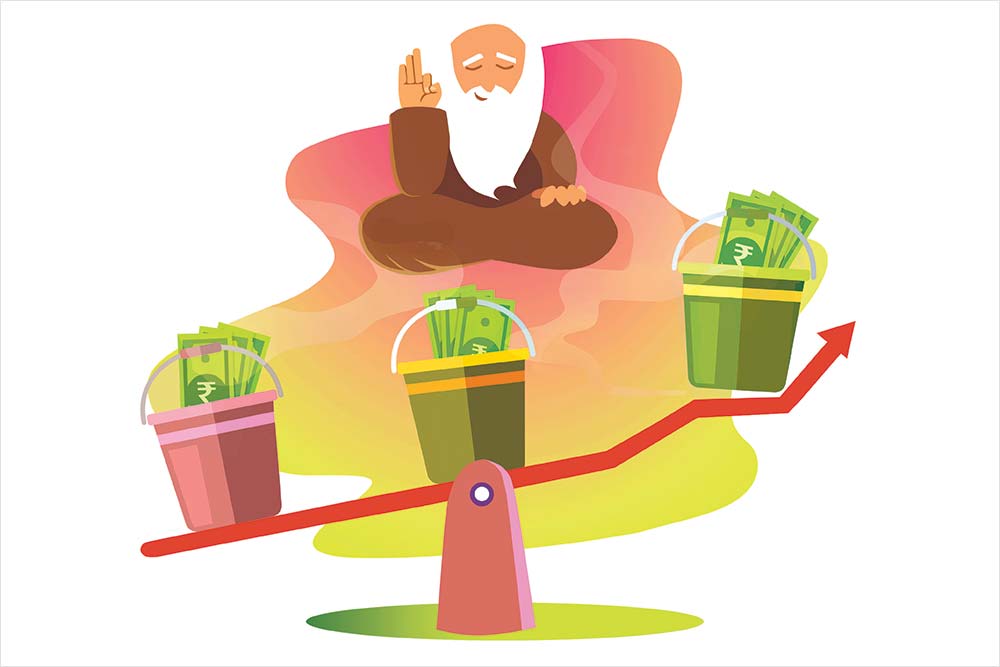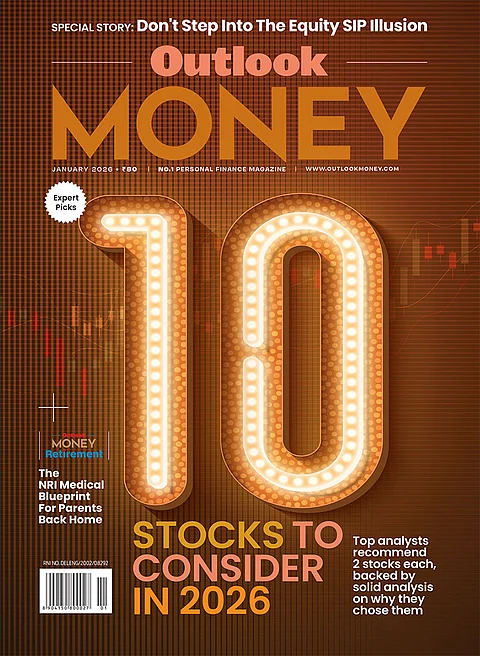The life-changing pandemic has altered our daily routine as social distancing guidelines have led to a more virtual existence. My usual meetings with The Sage have turned into video calls. We have both learnt to adapt to this new normal. Last week as we sat for our usual discussion, he threw his usual gambit at me, “My grandnephew John’s employee stock options are vesting. What would you advise him? Give me an assessment.”
I knew this was just a test, he knows more about all asset classes, their correlations and market cycles than most experts in the world.
The grandnephew John, based in the US, was working at a new economy company that had listed its shares last year. I had the data on the company on Bloomberg. Share price $209, 52 week high low $68-219, PE not relevant as it is still a loss-making company, Price to Book 45 times. As I rattled off the numbers, The Sage smiled and said, “What is the operating cash flow? Scrambling to get that number I realised it was negative for the latest quarter.”
Bringing me back to the opening gambit, The Sage remarked, “He has a ton of stock options that have vested. What should he do?”
Like Charlie Monger, The Sage has followed the motto of “invert, always invert”. Thinking backwards, looking at each problem from many dimensions. Over the years I have benefitted from his insights and ability to foresee disasters in the making. As he says over and over again, “Avoiding stupidity is much easier than seeking brilliance.”
I had noted a recent quote of Nazism Nicholas Taleb to impress The Sage. “People focus on role models; it is more effective to find antimodels, i.e. people you do not want to resemble when you grow up.”
The Sage glowed in appreciation when I read this quote to him. He said, now make an asset allocation plan for John.
I started:
1. We do not want to run the risk of this windfall gain turning into another Enron. When Enron collapsed, employees had over 60 per cent of their retirement savings in Enron stock. In 2008, we had seen the same happen to Lehman Brothers’ 25,000 employees. Many close friends went from being millionaires to having to restart their lives with all savings wiped out. And, that is what we have to plan against.
2. As an employee, he cannot shorten the stock, nor can he buy puts to hedge his exposure to the stock like a fund can do. So, there is no protection for him in case the market corrects or the company’s valuations dip.
3. On the other side of the island, this is a sunrise, growth company with massive upwards momentum. Given the way liquidity is being pumped into the US and global economies, this momentum can continue for years yet. Anything he sells will cause regret later if the stock continues its meteoric rise, as it has done from the $68 to $219 range in the last one year.
I stopped at this point. The Sage was sitting back in his chair, with his eyes closed.
He said, “Good. Now tell me, is John a Bond or a Stock?”
This was easy. A government employee with steady income, security of tenure and life time guaranteed employment was a Bond. John, working in a new economy company, was a stock, with great compensation offset by risk of getting fired for performance or due to market cycles.
So what is his priority?
Well, this was easy too. Fill up his Emergency Bucket. The Sage had taught me years back, to simplify financial planning by looking at wealth as three pools or Buckets. An Emergency Bucket to take care of any emergencies, An Investment Bucket to house all the investments in and a Dream Bucket to save for Dreams.
4. Fill up the Emergency Bucket John The Sage was enjoying this now. He opened another gambit. “How should he do that?”
5. He had taught this to me years back. It is easy to adjust when you are on the way up in your wealth journey. More money is always welcome. On the way down is when divorces happen, suicides happen and substance abuse happens. The antidote to this is to create a “Lifestyle Floor”.
John should sell enough of his vested stocks to fill up his Emergency Bucket and then sell enough so that his present lifestyle is protected. He should invest that amount into a stream of fixed inflows, like an annuity product. The opportunity loss is there in terms of further rise in his company’s stock, but the peace of mind he will get by this protection would be priceless in comparison.
6. I was enjoying this now. I made my gambit now. “John should buy a house or pay off his housing loan.” That would create more of a Lifestyle Floor and safeguard his family. The Sage took up the gambit. “Why would you waste money buying a house when you can rent for 2 per cent of its value?” I had my reasons ready: (a) This will ensure his family has a major asset, (b) Lifestyle floor, (c) This will certify that this portion of his portfolio is always invested and, as inflation increases, the value of the house will compound upwards. Continuous compounding is assured here. This passed his test and he asked me to go on.
7. We reached the Investment Bucket now. A concentrated exposure in a concept, digital theme stock in the portfolio and to have the salary income also dependent on the same company is too much concentration for 99 per cent of us. Some money should be taken out and put in lower correlation sectors or assets. Buy old economy stocks, buy metal stocks to get an exposure to the commodity super cycle, buy energy stocks to ride the coming recovery in
the economy.
8. As far as the Dream Bucket goes, John has a dream job, owns a chunk of stocks in a dream company at elevated valuations. If this holds, he is set. If an Enron, Lehman or Dot Com 2.0 happens, he will be looking at shattered Dreams. This is a difficult one.
The Sage appreciated my analysis. He said, “We cannot have our cake and eat it too in the markets. If you are enjoying such high price earnings valuations, you have enjoyed a large portion of the future growth already. Concept stocks and thematic plays give concentrated returns in a short period and then go sideways or downwards as some new theme picks up.
He said 4 per cent of US stocks have given all of the US market returns in 1926 to 2020. Diversification over long periods is the best way for all who are not master investors like Warren Buffett.
John should sell enough of his stock to guarantee a full Emergency Bucket, a “Lifestyle Floor” and a diversified portfolio that will guarantee his retirement safety. The rest of the company stock should stay and hopefully thrive in his Dream Bucket.
The Sage finished the call with his usual blessing
The author is a Private Investor







